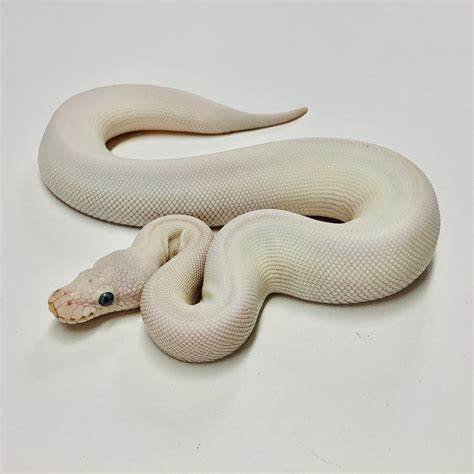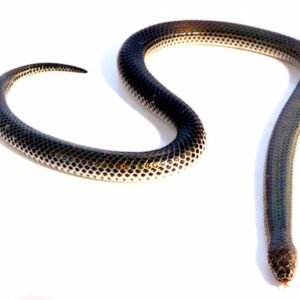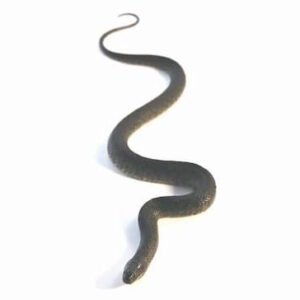The Allure of the Blue Eyed Leucistic Ball Python: A Comprehensive Guide
What is a Blue Eyed Leucistic Ball Python?
The blue eyed leucistic ball python is a captivating morph distinguished by its unique genetic characteristics. Leucism, which should not be confused with albinism, results in a significant reduction in pigmentation, giving these snakes their striking appearance. Unlike albino species, which lack melanin and thus present with pink eyes, leucistic ball pythons possess blue eyes, a key feature that enhances their allure among reptile enthusiasts.
The genetic makeup of a blue eyed leucistic ball python involves a specific combination of alleles that leads to the development of this remarkable coloration. When bred from genetic lines that carry the essential leucistic gene, these pythons typically exhibit a clean, almost ghostly white body that subtly reflects varying hues under different lighting conditions. Their blue eyes stand in stark contrast to their light skin, providing a stunning visual that contributes to their popularity as pets and display specimens.
Care Requirements and Environment
Providing adequate care for a blue eyed leucistic ball python is crucial to ensure its health and longevity. First and foremost, creating a suitable habitat is essential. These snakes thrive in environments that closely mimic their natural habitat, which consists of warm climates with sufficient humidity. A vivarium, or glass enclosure, measuring at least 40 gallons is recommended for an adult python. Inside the enclosure, provide a mix of hiding spots, such as logs or commercially available snake hides, to allow the python to feel secure.
Temperature control is vital when setting up the habitat for a blue eyed leucistic ball python. The enclosure should maintain a temperature gradient, with one end being warmer (around 88-92°F) and the cooler end ranging between 75-80°F. This temperature variation enables the snake to thermoregulate effectively. Using heat mats or basking lamps can maintain these temperatures. To monitor the conditions accurately, a reliable thermometer and hygrometer should be installed within the habitat.
Humidity levels are equally important; blue eyed leucistic ball pythons require humidity levels of about 40-60%. Achieving this can be done by misting the enclosure periodically and ensuring adequate water availability through a shallow water dish. Regularly checking and maintaining these humidity levels will help prevent shedding issues and promote overall wellness.
Feeding needs for these pythons are mainly based on their age and size. Juveniles typically require small rodents, while adults may consume larger prey items like rats. It is crucial to feed them appropriate-sized meals and to provide them in a clean, designated feeding area to minimize stress. It is recommended to monitor their health continually, observing for any signs of illness, such as respiratory issues or mites. Regular veterinary check-ups, coupled with a clean habitat, will help combat potential health issues, ensuring that your blue eyed leucistic ball python remains healthy and vibrant.
Behavior and Temperament
The blue-eyed leucistic ball python is renowned not only for its striking appearance but also for its fascinating behavior and temperament. Understanding these aspects is crucial for anyone considering this species as a pet. Typically, these snakes display a calm and docile demeanor, making them suitable for both novice and experienced reptile keepers. They are known for being relatively easy to handle, and with patience and gentle interactions, they can become accustomed to human presence.
One important consideration when interacting with a blue-eyed leucistic ball python is their body language. This species often exhibits subtle signs that can indicate its comfort level or stress. For example, when a ball python feels threatened, it may exhibit defensive behaviors such as hissing, attempting to bite, or coiling tightly. Conversely, a relaxed snake will exhibit behaviors such as leisurely tongue flicking and moving smoothly through its enclosure. Recognizing these signs can help owners respond appropriately, ensuring a positive experience for both the snake and its handler.
Building trust with a blue-eyed leucistic ball python begins with consistent and gentle handling. Start by allowing the snake to acclimate to its environment without excessive handling for the first few weeks. Once it has settled, you can gradually introduce handling sessions, ensuring they are kept brief initially. It is also advisable to handle the snake when it is active, as this can promote a more enjoyable interaction. Moreover, always approach the snake calmly, allowing it to become familiar with your scent and presence before any handling. This approach aids in fostering a strong bond, reducing stress for the snake and enhancing the overall ownership experience.
Understanding and interpreting the behaviors exhibited by blue-eyed leucistic ball pythons is essential for creating a harmonious relationship. By recognizing their social demeanor, employing proper handling techniques, and learning to read their body language, owners can ensure a healthy and happy environment for their pet.
Breeding and Genetic Considerations
Breeding blue eyed leucistic ball pythons presents unique genetic opportunities and challenges that require careful planning and understanding of the specific morphs involved. This captivating morph, known for its striking white coloration and distinctive blue eyes, results from a combination of genetic traits that breeders must navigate when selecting pairs. The blue eyed leucistic appearance generally arises from a combination of the genetic influences of the lesser, butter, and ghost morphs, which can influence the overall color and pattern of the offspring.
When breeding these remarkable snakes, breeders must prioritize selecting compatible morphs to enhance the likelihood of producing healthy hatchlings with desirable traits. For instance, pairing a blue eyed leucistic with another morph, such as a lesser ball python, can yield a variety of visual outcomes – some of which may not necessarily be leucistic. Understanding the dominant and recessive traits in ball python genetics is critical for achieving the desired results. This necessitates a thorough knowledge of the parental lineage and the genetic make-up of potential partners.
The incubation process also plays a significant role in the successful breeding of blue eyed leucistic ball pythons. Eggs should be incubated at stable temperatures and humidity levels to ensure proper development. It is common practice to maintain temperatures between 88°F and 90°F, while humidity levels should remain within a range of 60-100%. Post-hatching, special care must be taken to ensure that the hatchlings are healthy, which includes providing suitable housing and appropriate feeding practices. Moreover, as the popularity of blue eyed leucistics grows within the ball python community, breeders must stay informed about current trends and market demands, adapting their strategies to remain competitive. The interplay of genetics and responsible breeding practices ultimately shapes the future of this mesmerizing morph.





